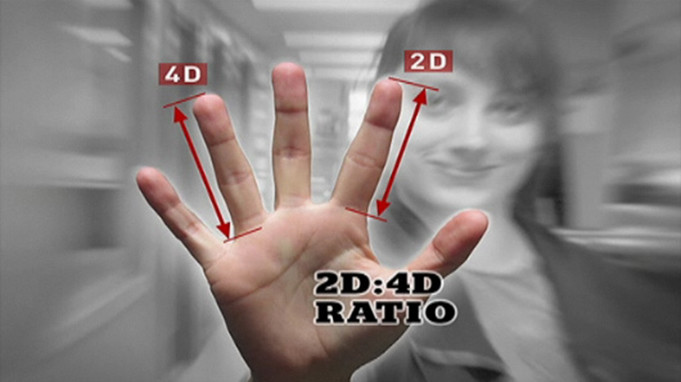Today we attempt to get to the bottom of an often discussed theory that claims the size of your ring finger compared to your index finger can determine many prenatal factors during child birth. This theory is otherwise known as the digit ratio theory (the 2D:4D finger ratio). Could the length of your fingers indicate a predisposition to certain diseases, homosexuality and even being transgender? John Manning, a professor in psychology of the University of Central Lancashire and the University of Liverpool, has a book aptly titled Digit Ratio: A Pointer to Fertility, Behavior, and Health where the author delves into this theory.
Could the length of your fingers indicate a predisposition to certain diseases, homosexuality and even being transgender?
Before we go any further let us make sure we are on the same page for this discussion. If you look at your right hand when it is facing down you would count from you thumb (being 1) and move left to your pinky (being 5). So your index finger is 2 and your ring finger is 4. Now that we have it straightened out, let’s proceed.
In a 2011 article from handresearch.com, they lay out the 7 key elements to this hypothesis.
1 – 2D:4D Finger ratio results from the balance between prenatal testosterone & prenatal estrogen;
2 – High 2D:4D finger ratio results from low testosterone concentrations OR high estrogen concentrations;
3 – Low 2D:4D finger ratio results from high testosterone concentrations OR low estrogen concentrations;
4 – The ring finger (4D) has much more hormone receptors than the index finger (2D), therefore the 2D:4D finger ratio is mostly driven by changes in the length of the ring finger (due to prenatal hormone concentrations);
5 – Studies in human & animals indicate that the link between prenatal hormones and 2D:4D finger ratio is generally stronger for the right hand;
6 – 2D:4D Finger ratio varies with sex: males generally have longer fourth digits relative to second digits than females;
7 – 2D:4D Finger ratio varies with ethnicity.
Excellent so what does this mean? Well the theory claims the larger the difference between the length of your index finger and the length of your ring finger the more you were exposed to testosterone during prenatal development. For example in research the professor conducted with patients who had Klinefelter’s syndrome, an intersex condition where men assigned at birth have low testosterone as one of the indicators, their digit ratios were closer to those of cisgender women.
So what does this mean for the transgender community? If you subscribe to this theory someone who is male to female should have closer lengths in their 2d and 4d fingers. Just like cisgender women. It would be the opposite for female to males according to the theory. The rest of his research is based on masculine and feminine traits due to these hormone exposures such as sports acumen and disease factors. This direct binary thinking is not something we subscribe to here at Transgender Universe. As far as hormone exposure in utero explaining homosexuality there is not much science available for us to weigh in. We were able to find one study on self identified lesbians that was done by Rutgers University that found that those who identified more masculine had a bigger difference in the length of the two fingers. Regarding the transgender community we do know prenatal hormone exposure is quickly becoming an accepted theory as to it’s origins but we are waiting on more studies.
So is it true? Well the studies are limited. Some say it is relevant while others feel it is utterly ridiculous as it does not factor in things such as genetics which can also determine the size of your hands. Our view is though this study may show some indications regarding testosterone exposure in the womb it is not enough to determine if someone is transgender or not. We also have so many variations in gender identity that we are not sure how they would relate to this study.
What do you think? Please take our poll below.

































